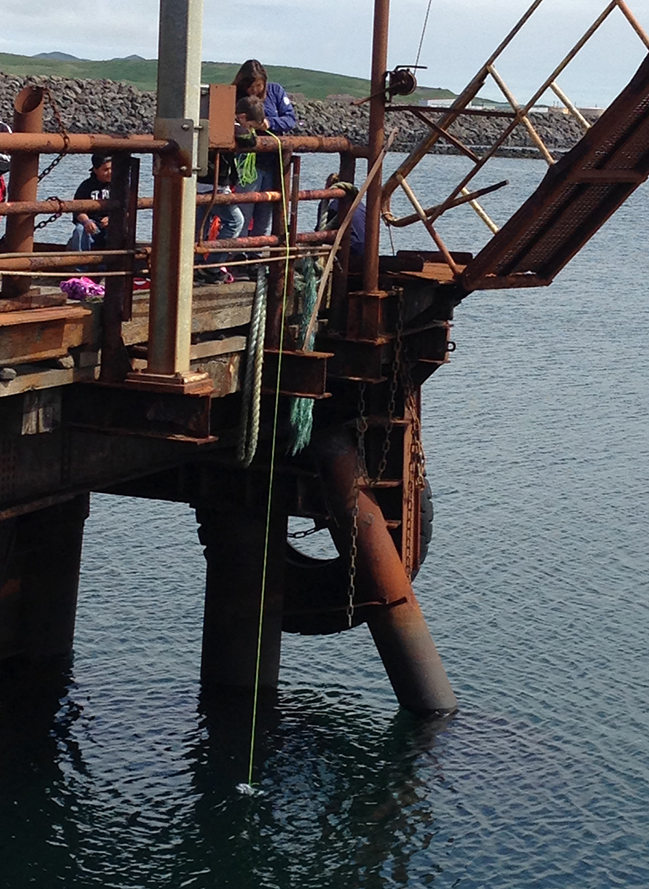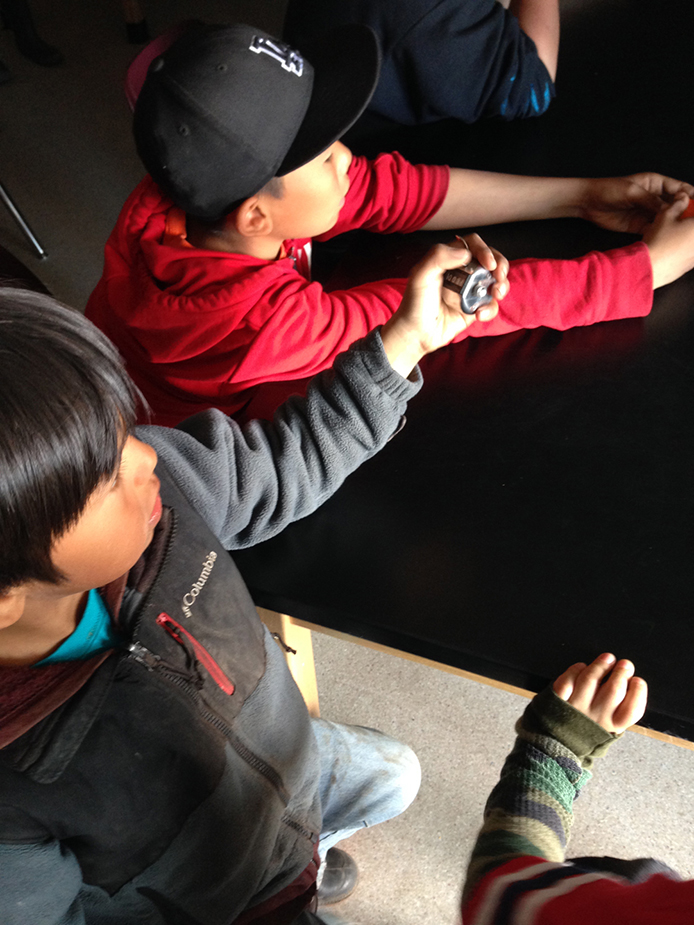Here is a blog entry written by our student intern, Diamond, about her trip to the cliffs with Refuge biologists and the third day of Seabird Camp.
This morning, Kendra and I went on the cliffs to count birds and nests. First, Kendra and I took a long and bumpy ride to the cliffs. When we got there, we saw the USFWS biologist Ryan. He explained to us that by monitoring the seabird populations scientists can monitor the health of the oceans. Since seabirds depend on a healthy ocean habitat, drops in their populations can be indicators of an unhealthy ocean. Ryan also showed us how to count bird populations and record the birds’ productivity. We first started with looking at the birds, and he showed us how we should do it. Then, we started writing our data on our notebook and we wrote B, C, E, BC, and BE and those mean: Bird, Chick, or Egg and BC means that there is a bird and a chick on a nest. BE means that there is a bird and an egg on the nest. After, we went to another point and counted how many birds and nests were there. Then Kendra and I went back to town and started the day of camp.
The rest of camp: We started the day examining Least Auklet diet samples and a variety of artifacts from the sea.
The campers then donned blue plastic gloves to avoid contaminating the plastic pellet samples as each experimental packet received a carefully-weighed cargo of exactly 20g. The kids all walked to the harbor and deployed the packages of pellets. The students will retrieve these packets in October during Bering Sea Days and determine the quantities of contaminants, such as PCBs, that they have absorbed during the intervening months.
We were all treated to tours of the Trident seafood processing facility. The kids enjoyed watching halibut get their heads removed, going in the giant freezers, and getting weighed on a giant scale. Our group, one third of the class, weighted 1550 pounds! (That included one teacher.)
Pairs of campers took turns braving an obstacle course created from the marine debris they collected yesterday. They learned how difficult it is for seabirds to get around and find food with so much junk in the way.
Campers learned all about seabird monitoring including the whats, whys and hows of U.S. Fish and Wildlife’s work on this island and throughout the state of Alaska. They will see this work first hand during Thursday’s field trip. We learned all about using an important tool for seabird monitoring: the tally clicker! Each kid counted up all the birds in a series of slides with and without the tally clicker. They gained an understanding of how useful this tool is for population counts. They’ll use them to count real birds tomorrow.
The campers finished up the day learning all about how GPS works. They went out and practiced using GPS units to find waypoints. Each waypoint had a word hidden that helped solve a seabird puzzle. The puzzle revealed that “Seabirds can fly underwater!”
After hours a group of campers started the Marine Debris Sculpture using our collected pile of junk. After sorting though and organizing all the debris, they decided to make a Tufted Puffin. The dedicated and enthusiastic group started by making the rock it will perch on, complete with plastic waves crashing and marine life clinging to the splash zone.




